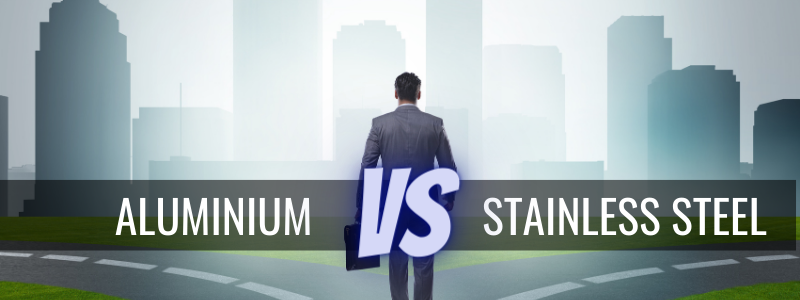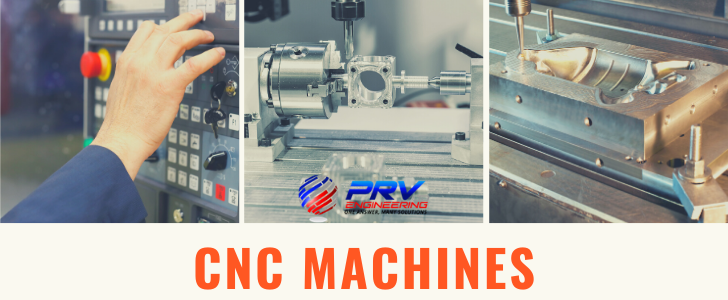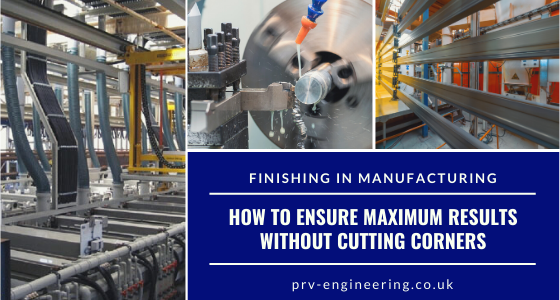Aluminium fabrication is defined as the process of cutting, shaping, and extruding aluminium to form a finished product. The processes involved spans widely from welding and stamping to bending, extruding and shearing, among others. For some time, many industries have benefitted from aluminium fabrication especially in the construction sector where companies require metal structures. Here are some commonly asked questions and answers about aluminium fabrication.
Precision engineering encompasses several sub-disciplines including mechanical engineering, electrical engineering, software engineering, electronics engineering and optical engineering. As anyone in the industry will tell you, the only way to get a job done as efficiently and accurately as possible is with modern machinery and PRV Engineering have done just that.
Choosing the right materials for a building project can be tricky as there’s much to consider. Looking at the characteristics of aluminium framework and stainless steel it’s easy to see why the decision should not be taken lightly.
Aluminium and stainless steel may have many similarities but it’s what sets them apart that could determine the final decision. Here are the main aspects that you should investigate when planning your construction project.
In our current technology-driven world, innovation has changed how brands and businesses operate. Many traditional development strategies have shifted toward implementing new manufacturing technologies to ensure sustained competitiveness, including rapid prototyping and software development. Many start-ups and established businesses are fast adopting these modern methodologies considering all the benefits.
CNC machines, or Computer Numerically Controlled machining, refers to a manufacturing process involving pre-programmed computer software. This dictates the movement of CNC machines which results in several major benefits over other machining methods. Compared to manual processes, CNC machining can help tremendously with improved accuracy and efficiency, faster production, better safety and cost savings.
Today, many sectors in the economy rely on CNC machining including aerospace, automotive, medical manufacturing, construction and woodworking. It has revolutionised manufacturing as other industries have also caught on from window and door manufacturers to those specialising in household appliances and electronics. In this article, you’ll discover the main advantages (and some drawbacks) of CNC machines.
Automating The Manufacturing Process With CNC Machines
Looking back at the history of manufacturing, the early days mostly involved hard, intensive labour. That all changed with the introduction of certain technologies with CNC machining at the top of the list. It has automated most of the manufacturing process that has resulted in less manual labour and increased efficiency which means a reduction in cost.
Thanks to advanced computer software transferring the required data to a CNC machine, it does all the work automatically with very limited input from a person. CNC machining has become more versatile in recent years as some can now even have additional axis. This has increased the types of machines that can effectively manufacture much smaller and more intricate parts with precision.
Recommended: ‘5 Axis Machining In Modern Engineering’
How Does CNC Machining Work?
We touched on the process earlier but here is a more detailed overview. CNC machines work through a numerically controlled computer program using a CNC machining language (‘G-code’). This controls various aspects of the process such as the feed rate, coordination, location and speed. The computer software controls the exact positioning and velocity far better than a human can which is why CNC machining is ideal for manufacturing metal and plastic parts.
The first step is to create a drawing using 2D or 3D CAD software and enter a computer code that the machine will understand. From there, technicians load the program but before any form of machining takes place, a human operator tests everything. This is referred to as a trial run and if better known as “cutting air”. Such a trial run is crucial in the manufacturing process as any mistake regarding speed or tool positioning can lead to broken parts or damaged machines which is unnecessary and avoidable.
Why Manufacturers Prefer CNC Machines
CNC machining has become increasingly popular as it greatly streamlines the manufacturing process. Considering the numerous advantages of CNC machines mean operator-required equipment been replaced in many cases. Regardless of the few disadvantages, manufacturers across all sectors still highly rate CNC machining for fabrication and manufacturing applications. Here are some of the main benefits for your business, manufacturing processes and staff.
CNC Machines Increase Production Speed And Efficiency
CNC machines allow manufacturers to work at a much faster pace while delivering the same high standard of products. Whilst other manufacturing methods require additional resources, CNC machining can do the job without adding to the overheads.
CNC machines can work continuously overnight, weekends and holidays. They will only be stopped for maintenance, repairs or to input a new project. These machines can produce multiple orders much faster than traditional labour-intensive methods. CNC machines require less staff so that means saving time and money on training.
Computer Control Means Fewer Human Errors And Less Material Waste
It’s only natural that people make mistakes but the risk is massively reduced with CNC machining as fewer people are involved in the manufacturing process. Remember, the computer is programmed to do something specific with tight tolerances and specific requirements and will perform as the software dictates no matter what.
It certainly helps that when operators enter the design parameters and specifications that the machine will consistently execute repetitive processes. Everything works according to scale and specifications which leaves almost no room for material waste. This has the potential to help you save big on costs and potential rework time.
CNC Machines Are Safer To Operate
Aside from operators entering the code and maintaining the machines, the process is entirely automated. That means operators don’t have to be anywhere near the cutting tools. This has resulted in decreased occupational health and safety accidents and that is a massive bonus for business and staff. Indeed, operating a CNC machine may not be as simple as using a cordless drill but they are relatively simple to use with some training and practice.
Allows For Advanced Fabrication In A Future-Ready World
CNC plays a pivotal role when it comes to fabrication as several operations are involved which these machines can perform. This includes welding sheets of metal, shearing, punching holes and flame cutting. Due to the incredible precision that CNC machines offer, they can produce extremely complex shapes that manual machines would not be able to replicate. Due to the operator programming the machine, they are highly flexible and should be your first choice.
Considering CNC machines are all around us in almost every industry, implementing it into your business will help you prepare for the future. If you think how much technology has changed in just the last 10 years, the manufacturing sector is looking pretty sharp with CNC in its corner. With the advanced capabilities, you can keep up with all the latest trends, changes in design, building codes and any other standards.
Disadvantages Of CNC Machines
CNC machines are typically more expensive and do require a larger initial investment than manual machines. However, as this technology becomes more widely used and the accepted standard, supply will increase and that means costs could gradually go down.
There is also an element of skills loss as the demand for manual machine operators decreases. This results in fewer new students having to adopt specific skills that may eventually lead to the total loss of long-preserved skills.
At the same time, unemployment is always a big talking point when it comes to any form of automation. The good news is that even though CNC machines require fewer people, there is a growing demand for software engineers and mechanical engineers. If companies and universities adopt and provide the necessary education and training, the skills gap may be closed somewhat in the manufacturing industry.
CNC Machining At PRV Engineering
CNC machines are incredibly versatile and you’ll know how impressive they can be once you see them in action. They serve a multitude of industries with great success, especially in the aerospace sector where they favour five-axis machining which enables them to manage hard-to-cut materials like Inconel.
For reliable and effective CNC machining services, contact PRV Engineering, one of the leading engineering service providers in the UK and Europe. We have state-of-the-art CNC machines to serve our clients from various industries. Some include food and chemical processing, pharmaceutical, railway, military, defence, automotive and aerospace.
Stay up to date on all the latest in engineering, manufacturing and technology by following our blog. You can also join the conversation on Twitter, Facebook, YouTube or LinkedIn using the hashtag #PRVtech.
Aluminium fabrication can be described as the process of shaping different aluminium parts into a finished product. Several industries rely heavily on aluminium fabrication but none more so than building metal structures.
In this article, we will briefly cover elements of both – the aluminium fabrication process and specialist finishing.
Successful engineering companies use a combination of expert knowledge, experience and continuous investment in machinery and staff. Custom fabrication services require all of these elements and more as quality and production costs are the top priority. Custom fabrication is a specialist process whether you’re machining steel or aluminium.
Metal fabrication, for example, involves a wide range of skills and disciplines from profiling, bending and forming, cropping, welding to assembly and finishing. While technology, machinery and computer-aided design software have led to advanced custom fabrication services, there is still no substitute for experience.












Recent Comments